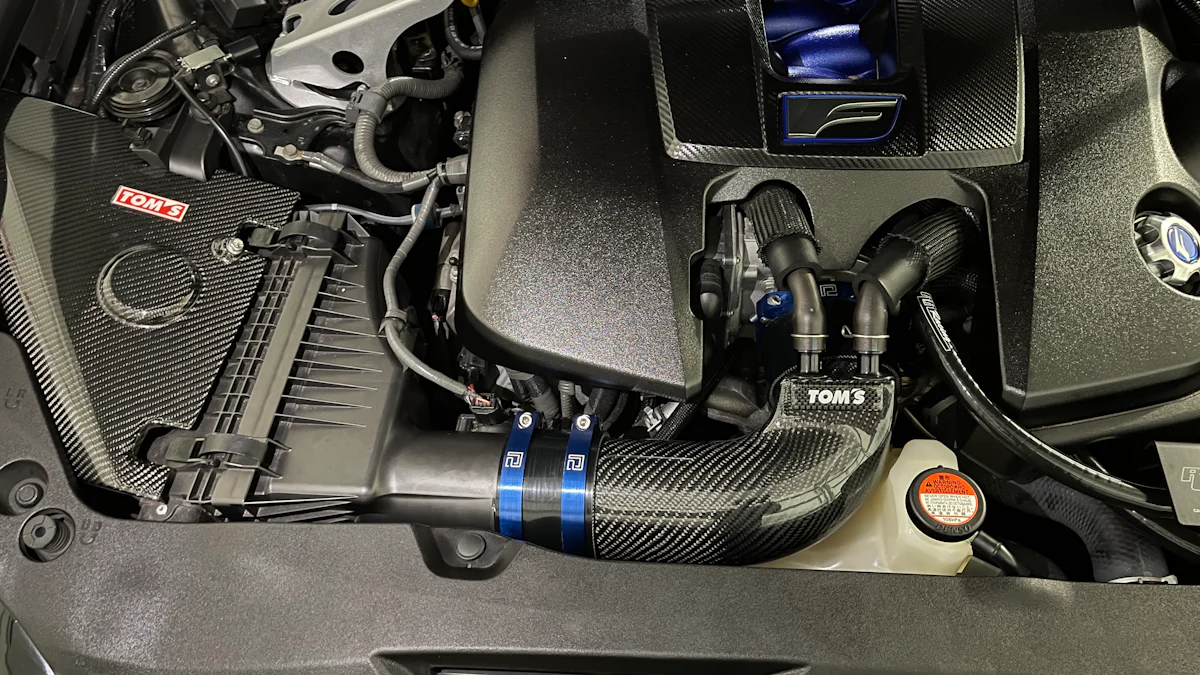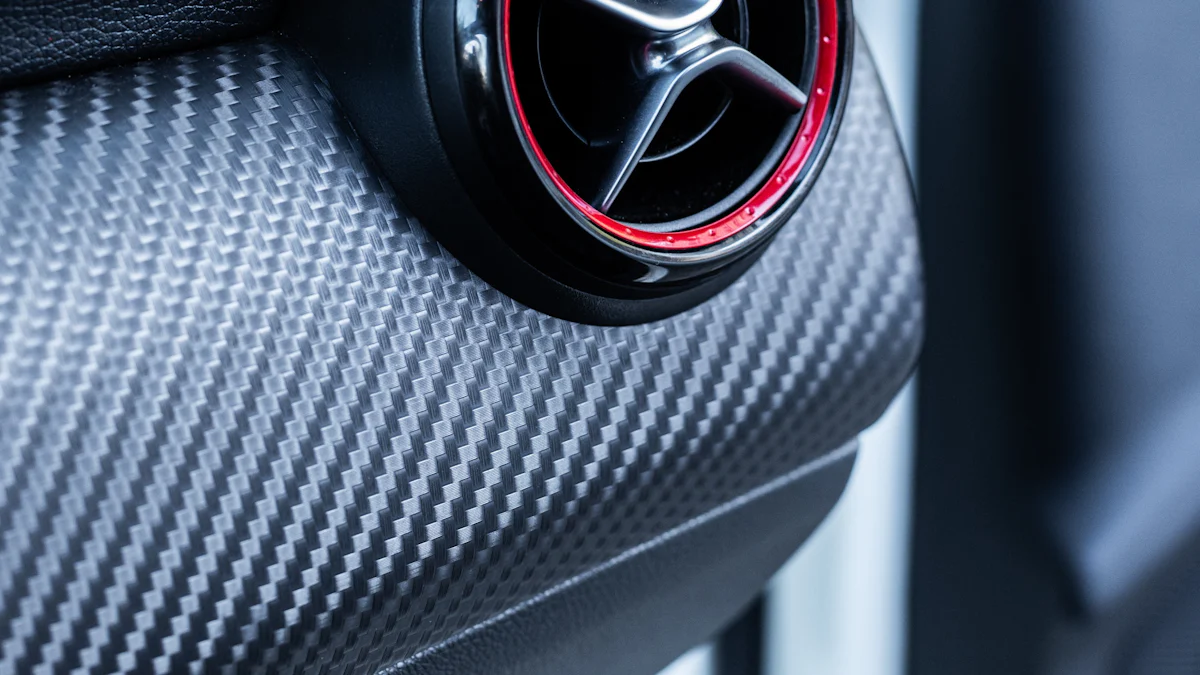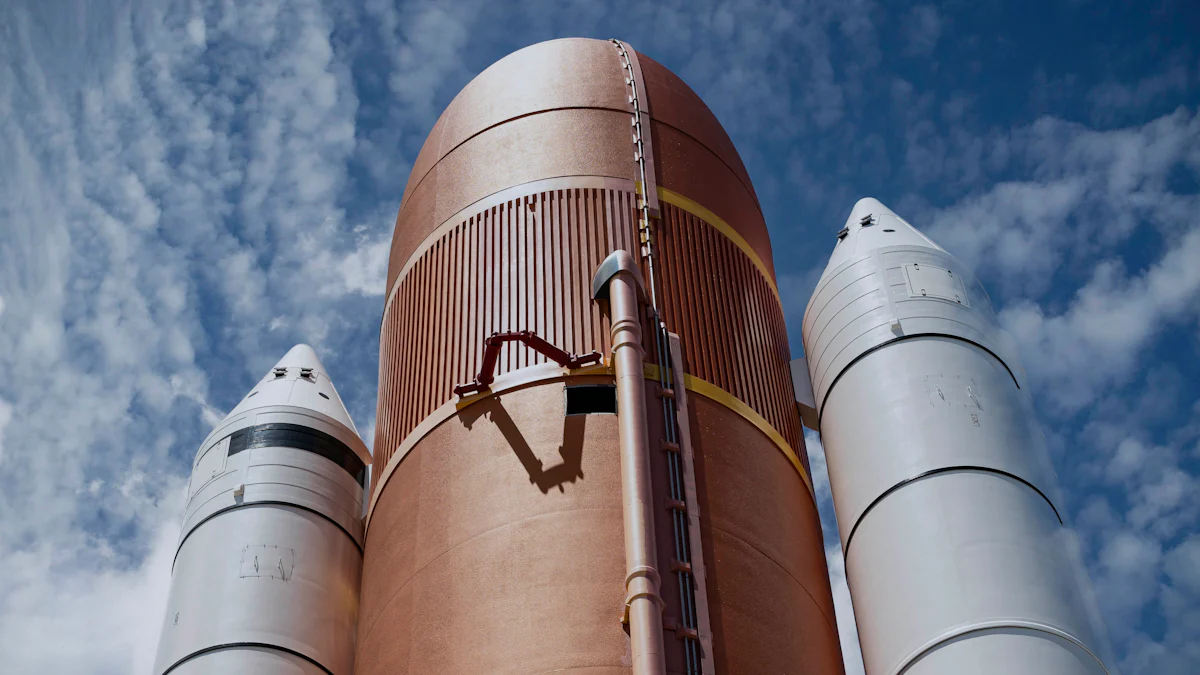
C/C composite, an advanced material reinforced with carbon fibers, has transformed various modern industries. Its lightweight structure, coupled with exceptional strength and thermal resistance, makes it essential for challenging applications. Carbon-carbon composites applications span across aerospace, automotive, and energy sectors, where durability and the ability to endure extreme conditions are paramount. Notable carbon-carbon composites examples include aircraft braking systems, high-performance automotive components, and wind turbine elements. The carbon-carbon composite manufacturing process is designed to deliver outstanding mechanical strength and thermal shock resistance, while c/sic material properties further enhance functionality in critical systems. These characteristics continue to drive innovation across diverse industries.
Key Takeaways
- C/C composite is a lightweight, durable material that excels in extreme conditions, making it essential for aerospace, automotive, and energy industries.
- In aerospace, C/C composites enhance safety and efficiency in applications like aircraft brakes and rocket nozzles due to their exceptional thermal resistance.
- The automotive industry benefits from C/C composites by improving vehicle performance, fuel efficiency, and safety through lightweight structural components and high-performance brake systems.
- C/C composites play a crucial role in the energy sector, particularly in wind turbines and nuclear reactors, by providing thermal stability and corrosion resistance in harsh environments.
- Utilizing C/C composites can lead to significant cost savings in maintenance and operational efficiency due to their long lifespan and durability.
- The versatility of C/C composites supports innovation across industries, enabling the development of advanced technologies and sustainable solutions.
Aerospace and Defense: Leading Applications of C/C Composite

Key Applications in Aerospace
Aircraft brakes for commercial and military planes.
Aircraft braking systems demand materials that can endure extreme heat and pressure. C/C composite provides the ideal solution due to its exceptional thermal resistance and durability. These composites ensure reliable performance during rapid deceleration, even under intense conditions. Military and commercial aircraft rely on this material to maintain safety and efficiency during operations.
Rocket nozzles and heat shields for space exploration.
Space exploration requires materials capable of withstanding extreme temperatures and mechanical stress. C/C composite plays a critical role in manufacturing rocket nozzles and heat shields. Its ability to resist thermal shock ensures the structural integrity of spacecraft during launch and re-entry. This material supports the aerospace industry’s pursuit of innovation and reliability in space missions.
Structural components in high-performance aircraft.
High-performance aircraft require lightweight yet strong materials for structural components. C/C composite meets these requirements by offering a high strength-to-weight ratio. This property enhances the aircraft’s maneuverability and fuel efficiency. Engineers use this material to design advanced structures that improve overall performance and safety.
Why Aerospace and Defense Rely on C/C Composites
Exceptional heat resistance for high-temperature environments.
Aerospace and defense applications often involve extreme heat. C/C composite excels in such environments due to its superior thermal stability. This property makes it indispensable for components like heat shields and braking systems. Its ability to maintain performance under high temperatures ensures operational safety and reliability.
Lightweight properties that improve fuel efficiency and maneuverability.
Reducing weight is crucial in aerospace and defense industries. C/C composite offers a lightweight solution without compromising strength. This characteristic improves fuel efficiency and enhances the maneuverability of aircraft and spacecraft. It supports the industry’s goals of achieving better performance and sustainability.
High strength-to-weight ratio for enhanced safety and performance.
Safety and performance are top priorities in aerospace and defense. C/C composite provides a high strength-to-weight ratio, ensuring robust and reliable components. This property allows engineers to design systems that withstand extreme conditions while maintaining optimal functionality. Its application contributes to the advancement of cutting-edge technologies in these industries.
Automotive: Revolutionizing Vehicle Performance with C/C Composite

Key Applications in Automotive
High-performance brake systems in sports and luxury cars.
Sports and luxury cars demand precision and reliability in braking systems. Manufacturers use C/C composite to create high-performance brake components that deliver consistent results under extreme conditions. These brakes resist wear and maintain functionality even during rapid deceleration at high speeds. The material’s thermal resistance ensures optimal performance, making it a preferred choice for premium vehicles.
Lightweight structural components for electric and hybrid vehicles.
Electric and hybrid vehicles require lightweight materials to improve energy efficiency. Engineers incorporate C/C composite into structural components to reduce overall vehicle weight without compromising strength. This approach enhances battery range and supports the industry’s push toward sustainable transportation. The material’s high strength-to-weight ratio also contributes to improved safety and durability.
Heat-resistant parts in racing vehicles.
Racing vehicles operate in environments where extreme heat and mechanical stress are constant challenges. C/C composite provides the heat resistance needed for critical parts like exhaust systems and engine components. Its ability to withstand high temperatures ensures reliability during intense competition. This material enables racing teams to achieve peak performance while maintaining safety standards.
Why the Automotive Industry Depends on C/C Composites
Durability and resistance to wear in demanding conditions.
Automotive applications often expose materials to harsh conditions, including friction, heat, and mechanical stress. C/C composite offers exceptional durability and resists wear, making it ideal for components like brake systems and structural parts. Its long lifespan reduces maintenance needs and enhances the reliability of vehicles in demanding environments.
Lightweight properties that enhance vehicle efficiency and speed.
Reducing weight is a priority for automotive manufacturers aiming to improve fuel efficiency and speed. C/C composite provides a lightweight solution that supports these goals. By integrating this material into vehicle designs, engineers can achieve better acceleration, handling, and energy efficiency. Its application aligns with the industry’s focus on innovation and performance.
Superior thermal stability for high-performance applications.
High-performance vehicles generate significant heat during operation. C/C composite excels in such conditions due to its superior thermal stability. This property ensures that components maintain their integrity and functionality under extreme temperatures. Its use in automotive systems enhances safety and supports the development of cutting-edge technologies.
Energy: Harnessing the Power of C/C Composite in Critical Systems
Key Applications in Energy
Wind turbine components for renewable energy systems.
Wind turbines require materials that can endure constant mechanical stress and harsh environmental conditions. Engineers use C/C composite to manufacture critical components like turbine blades and structural supports. Its lightweight nature reduces the overall load on the turbine, improving efficiency and performance. The material’s high strength ensures durability, even in extreme weather, making it a reliable choice for renewable energy systems.
Nuclear reactor parts for high-temperature environments.
Nuclear reactors operate under intense heat and radiation, demanding materials with exceptional thermal stability. C/C composite plays a vital role in constructing reactor components such as control rods and insulation panels. Its ability to withstand extreme temperatures without degrading ensures the safety and longevity of these systems. This material supports the energy sector’s need for reliable and efficient solutions in high-stakes environments.
Heat exchangers in industrial energy systems.
Industrial energy systems rely on heat exchangers to transfer thermal energy efficiently. C/C composite enhances the performance of these systems by offering superior thermal conductivity and resistance to thermal shock. Its corrosion-resistant properties make it ideal for use in environments exposed to aggressive chemicals or high humidity. This material ensures consistent operation and reduces maintenance costs, contributing to the overall efficiency of energy production.
Why the Energy Sector Relies on C/C Composites
Thermal stability for extreme temperature conditions.
Energy systems often operate in environments with fluctuating or extreme temperatures. C/C composite provides unmatched thermal stability, ensuring components maintain their integrity and functionality. This property makes it indispensable for applications like nuclear reactors and heat exchangers, where consistent performance is critical.
Corrosion resistance in harsh environments.
Energy infrastructure frequently encounters corrosive elements, including chemicals, moisture, and salt. C/C composite resists corrosion, extending the lifespan of components in challenging conditions. This durability reduces the need for frequent replacements, lowering operational costs and enhancing system reliability.
Long lifespan and reliability in critical energy systems.
The energy sector prioritizes materials that offer long-term reliability. C/C composite delivers exceptional durability, ensuring components perform effectively over extended periods. Its robust nature minimizes wear and tear, making it a cost-effective solution for critical systems like wind turbines and industrial heat exchangers. This material supports the industry’s focus on sustainability and operational efficiency.
The aerospace, automotive, and energy industries showcase the transformative impact of C/C composite in modern technology. This material’s lightweight design, thermal resistance, and durability make it a cornerstone for innovation in demanding applications. From enhancing aircraft safety to improving vehicle efficiency and optimizing energy systems, its versatility drives progress across critical sectors. As industries continue to evolve, C/C composite holds immense potential to shape future advancements, ensuring reliability and performance in increasingly complex environments.
FAQ
What is C/C composite, and why is it unique?
C/C composite, also known as carbon-carbon composite, is a material made by reinforcing carbon fibers with a carbon matrix. Its unique properties include lightweight design, high strength, thermal resistance, and durability. These characteristics make it ideal for applications in industries requiring materials that can withstand extreme conditions.
How is C/C composite different from traditional materials?
C/C composite offers a superior strength-to-weight ratio compared to metals like steel or aluminum. It resists thermal shock and maintains stability at high temperatures, unlike many traditional materials. Its corrosion resistance and long lifespan further distinguish it as a preferred choice for demanding applications.
Why is C/C composite widely used in aerospace and defense?
The aerospace and defense industries rely on C/C composite for its ability to endure high temperatures and mechanical stress. Applications such as aircraft brakes, rocket nozzles, and heat shields benefit from its thermal stability and lightweight properties. These features enhance safety, fuel efficiency, and overall performance.
How does C/C composite improve automotive performance?
C/C composite enhances automotive performance by reducing vehicle weight and increasing durability. High-performance brake systems, lightweight structural components, and heat-resistant parts in racing vehicles utilize this material. Its thermal stability and wear resistance ensure reliability in high-stress environments.
What role does C/C composite play in the energy sector?
The energy sector uses C/C composite in critical systems like wind turbines, nuclear reactors, and heat exchangers. Its thermal stability and corrosion resistance make it suitable for extreme temperature and harsh environmental conditions. These properties contribute to the efficiency and longevity of energy systems.
Is C/C composite environmentally friendly?
C/C composite supports sustainability by improving the efficiency of systems it is used in, such as electric vehicles and renewable energy technologies. Its long lifespan reduces the need for frequent replacements, minimizing waste and resource consumption.
Can C/C composite be customized for specific applications?
Yes, manufacturers can tailor C/C composite to meet specific requirements. Adjustments in the carbon fiber arrangement and matrix composition allow for optimization of properties like strength, thermal resistance, and weight. This flexibility makes it suitable for diverse industrial applications.
What industries benefit the most from C/C composite?
Industries such as aerospace, automotive, energy, and defense benefit significantly from C/C composite. Its unique properties address the challenges of high temperatures, mechanical stress, and harsh environments. These industries leverage the material to enhance performance, safety, and efficiency.
How does C/C composite contribute to innovation?
C/C composite drives innovation by enabling the development of advanced technologies. Its use in cutting-edge applications, such as space exploration and electric vehicles, showcases its potential to solve complex engineering challenges. The material continues to shape the future of multiple industries.
Where can businesses source high-quality C/C composite?
Businesses can source high-quality C/C composite from specialized manufacturers like Ningbo Miami Advanced Material Technology Co., LTD. This company focuses on producing advanced materials, including C/C composites, for industries such as aerospace, energy, and automotive. Their expertise ensures reliable and efficient solutions tailored to industrial needs.